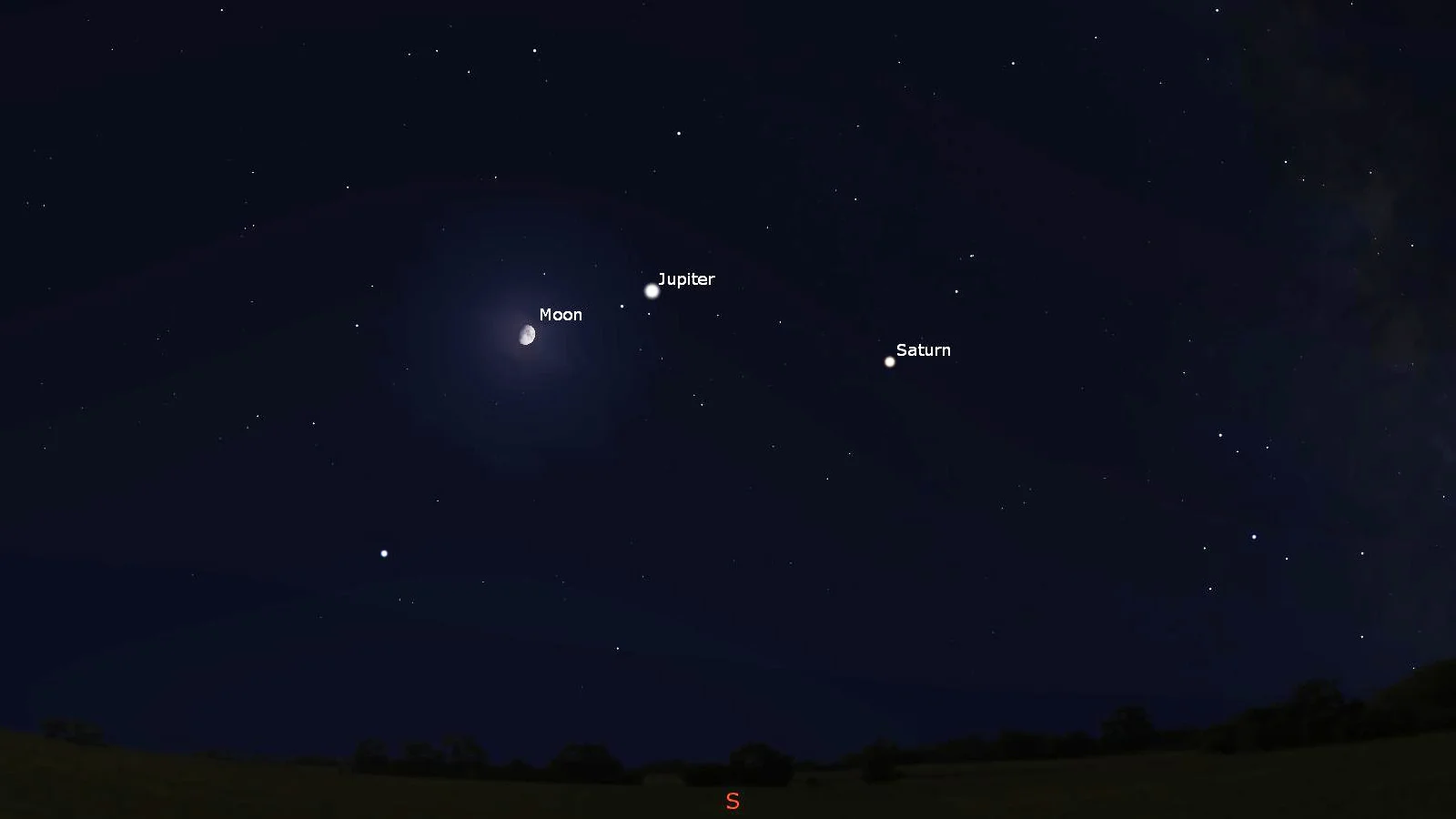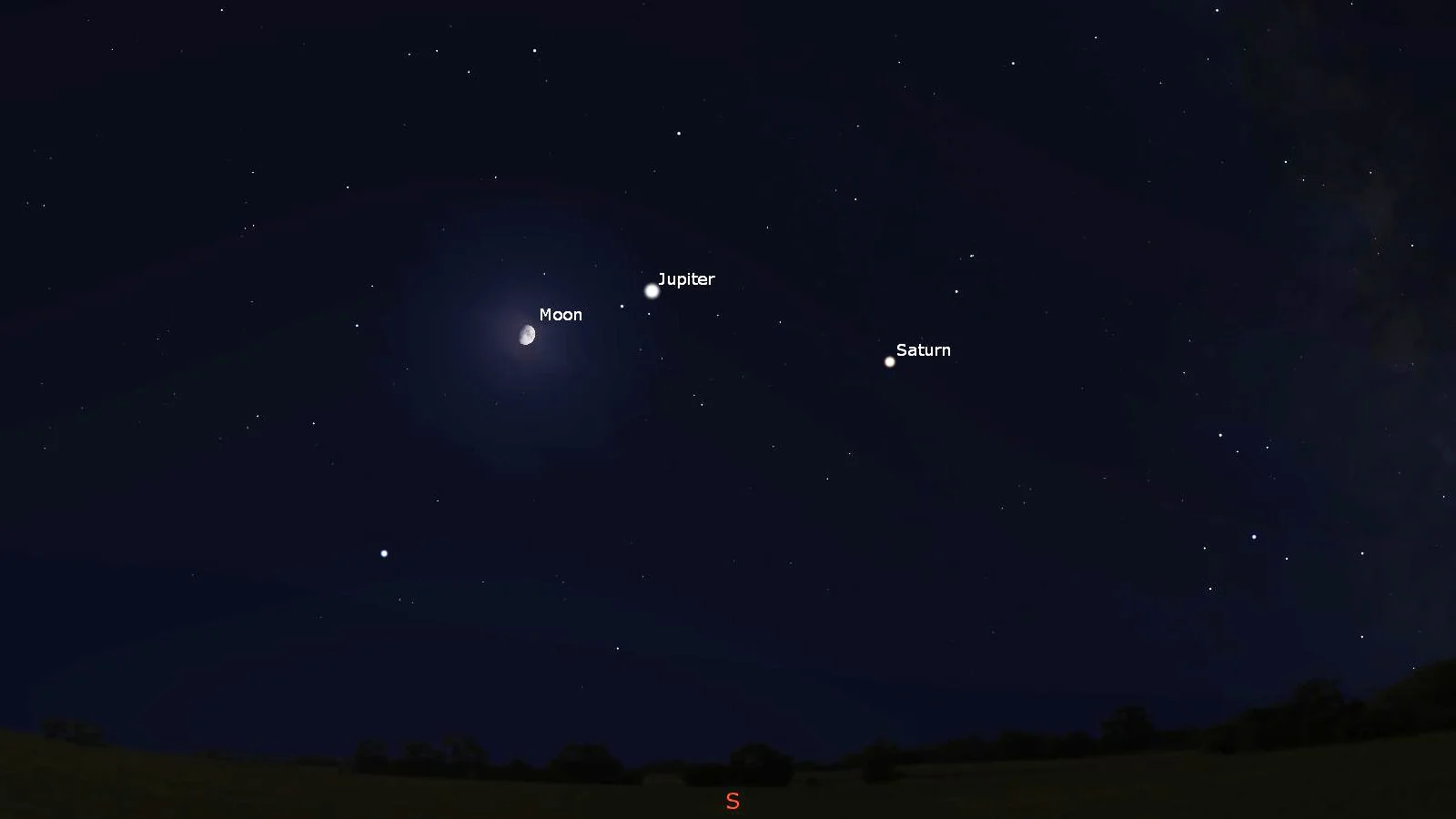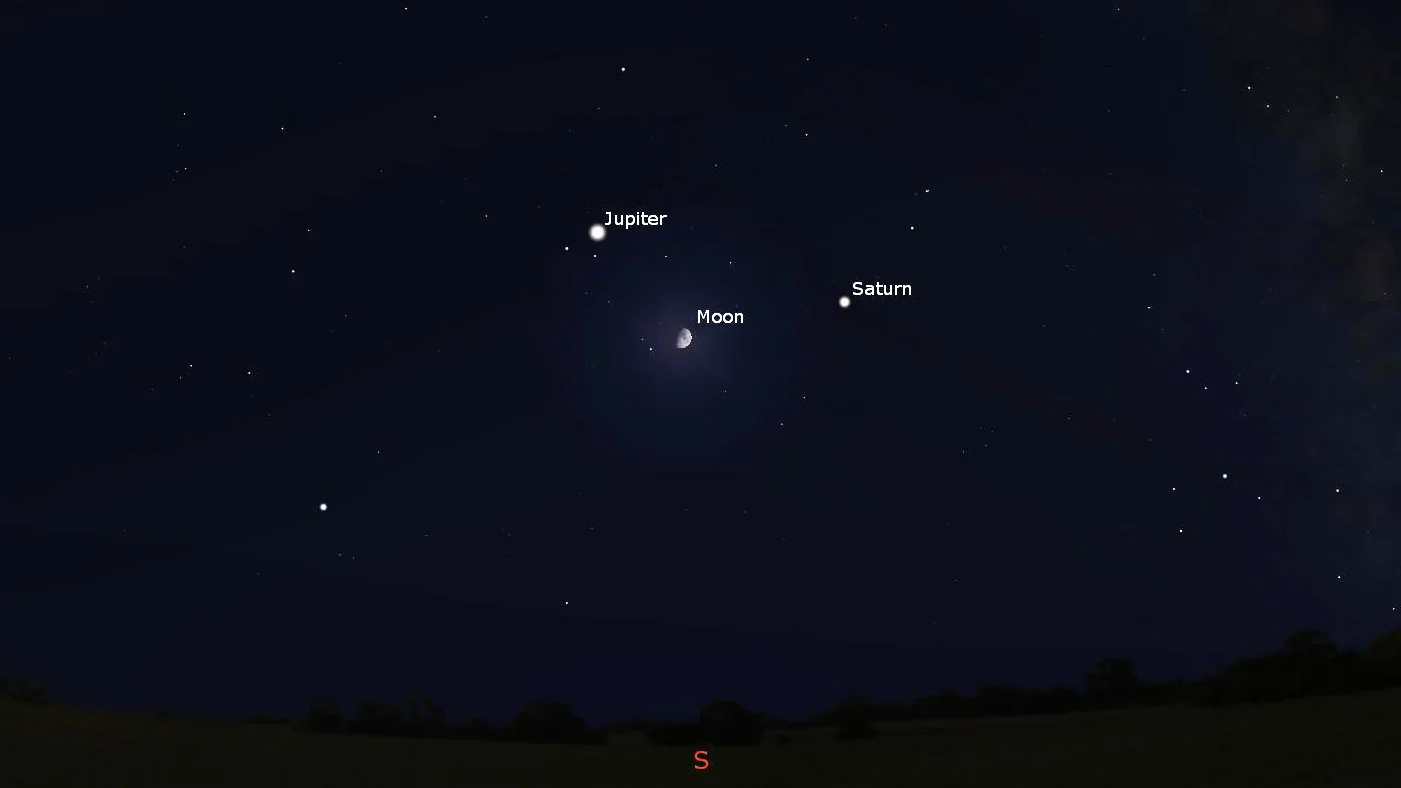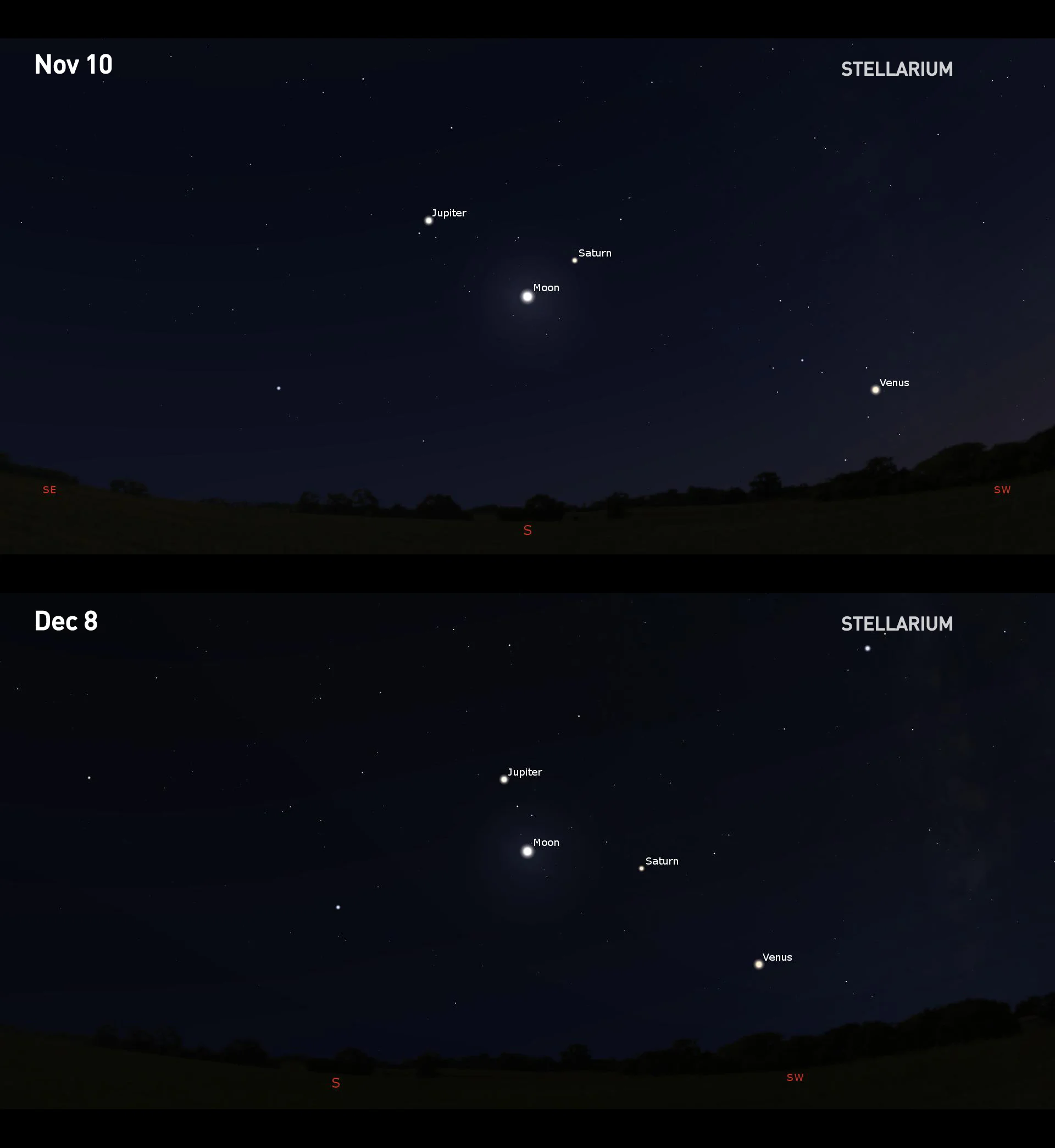
Updated on Oct. 15, 2021, 8:40 AM
Friday night's Waxing Gibbous Moon has a couple of celestial companions as it arcs across the sky.
The Moon teams up with the solar system's largest planets this week!
0 seconds of 47 secondsVolume 0%
You don't need to seek out exceptional dark skies to view every astronomical event this season. Tonight, you can witness a celestial trio crossing the sky.
This article was originally published on Thursday, Oct 14. It has been updated.
After sunset tonight, pause for a moment in whatever you're doing to take in the night sky. If your skies are clear, or there are some breaks in the clouds, you may spot bright Venus off towards the western horizon, but the real 'stars' of the show will be to the southeast.
Already well above the horizon as the Sun sets, the Waxing Gibbous Moon will be shining brightly, but it won't be alone. Off to the side of it, two other bright points will be visible. These aren't stars, though. Instead, they're the two largest planets in our solar system — Jupiter and Saturn.

The Moon and Jupiter are bright enough to be visible from pretty much anywhere, even from the most light-polluted streets of Canada's largest cities. Saturn, on the other hand, can be a bit more of a challenge. Since it is more distant than Jupiter, it doesn't shine as brightly. Thus, if you're looking up from an urban setting, give yourself a moment to see if you can spot it. Maybe even try gazing slightly off to one side to bring your more sensitive peripheral vision into play (a technique called "averted vision").
However, the farther away from city lights you are, the brighter this trio will appear.
Cloud conditions will be the most significant factor in determining who will see this celestial team-up. On Thursday night, the Moon was in an even better position, nestled in between the two giant planets. Unfortunately, most of the country was trapped under overcast skies at the time.
Content continues below

Check your forecast to see if you'll have clear skies tonight.
Don't worry, though! If you miss it this time, either due to your schedule or an overcast sky, there are still two more opportunities to see these objects team up this season.
Watch again around November 10 and then again around December 8 to see them grouped together, once again, in the hours just after sunset. Since the trio will be farther to the west in our sky at these times, look for Venus to join them as well — first at a distance in November, but then forming a close line-up in December.






































